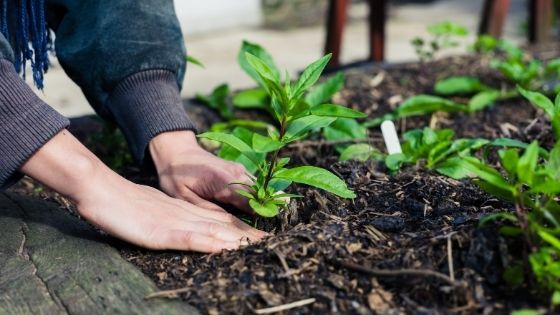Who says the fall season is only for the falling leaves and wintry feels? It could also be a season of blossoming garden and vegetable treats! Imagine the raw vegetables coming out of your lawn during harvest time. Yum! And what’s more satisfying is producing fresh vegetables with your hard work and dedication. Now that’s something to cherish during the fall season.
You might be asking, is gardening an autumn thing? Of course! Gardening is an all-year-round activity. You don’t need to wait for the perfect season; every season is ideal, especially if you know what plants or crops are fit for such a season. Before you begin buying seedlings and stuff, make sure that your garden is ready. Plow it, add compost, remove any debris so that you’re one step ahead.


Now, below are the best vegetables to plant during the autumn season.
Broccoli
Broccoli should be planted in the fall. Why? Because it’s the perfect addition to your vegetable salad, and it is packed with nutritional benefits too. For a successful broccoli harvest, you need to add compost to your soil and an area in your garden that is relatively sunny. In this way, your broccoli seedlings can thrive and sprout.
Don’t worry about cold temperatures because broccoli can survive in those too. Also, broccoli is a superfood. It contains a tremendous amount of nutrients such as protein, vitamins A and D, contains iron, and aids in digestion. What more can you ask for?
Leeks
This plant is a very hardy one. Leeks can survive in mild winters, and it tastes better when grown in cold temperatures. What a leek, right? Anyway, to enjoy leeks throughout the fall and winter season, plant them indoors for 8-12 weeks before the expected first frost. Also, leeks multiply when there is enough space between plants so that its roots can spread evenly.
Leeks are a good source of vitamin K and dietary fiber. A cup serving of leeks contains a substantial amount of manganese, vitamin B6, and iron, and the best recipe for this crop is curried leeks. Perfect for the cold season.
Turnips
Another cool-weather vegetable, turnips can tolerate light frost and is perfect for your fall garden. It tends to taste sweeter compared to turnips harvested during the spring. Plant these in the late summer and enjoy a turnip fall harvest. Also, to make your turnips last for the early winter, it is recommended to cover it with a thick mulch so that the ground will be less frozen.
Turnips are a good source of vitamins C, B1, B3, omega-3 fatty acids, and phosphorus. A unique recipe for this plant is healthy and delicious turnips chips.
Mustard
With its leafy greens, mustard is best grown during the cold seasons because they tend to materialize when touched with a light frost. Once your mustard seedlings are at least three inches tall, then they are ready for transplant in your garden—no need to worry about mustards so much because they are a carefree crop to plant.
Mustard seeds are rich in selenium, which has anti-inflammatory properties, and both seedlings and leaves of this wonder plant are consumable too!
Arugula
Arugula is a superb addition to your vegetable salad. Its mustard-like taste is an excellent mix for your salads, soups, and even sandwiches. Plant arugula in the late summer and keep your soil moist so that you can enjoy a fresh arugula harvest in the fall. When harvesting arugula, the young leaves taste better than the adult ones, and its flowers are edible.
Arugula is a good source of calcium, which is necessary for a healthy bone. It is also rich in vitamin A and potassium.
Kohlrabi
Midsummer is the best time to sow kohlrabi to enjoy a fall harvest. They also mature fast and are ready for harvest after 65 days from planting! Kohlrabies are a bit spicy and crispy when eaten raw, and they are found in most Indian cuisines. The best recipe for kohlrabi includes fritters, steamed, or even roasted.
Eating kohlrabi can help boost your immune system and can lower the risk of chronic heart diseases. As weird as its name gets, kohlrabies are one heck of nutritious food. Yum!
Pak Choi
This Asian crop is one that can make your fall garden more delightful. Pak choi strives in the cold weather and moist soil. That’s why it is preferable to plant during the early fall. They also grow fast and are ready for harvest after 40 days. Pak choi is very easy to prepare, and it is best paired with tofu, salmon, and can be added to ramen.
Pak choi contains beta-carotene and vitamins C and E, which are essential components to protect our cells from further damage. You can also add pak choi to your regular diet for additional health benefits.
Takeaway
Planting healthy and fresh vegetables in the fall season is one activity that has a lot of benefits. Not only does it help you physically, but gardening can also boost our sense of accomplishment, especially when those leafy greens pop up in our home garden. Try fall gardening now and see for yourself.























